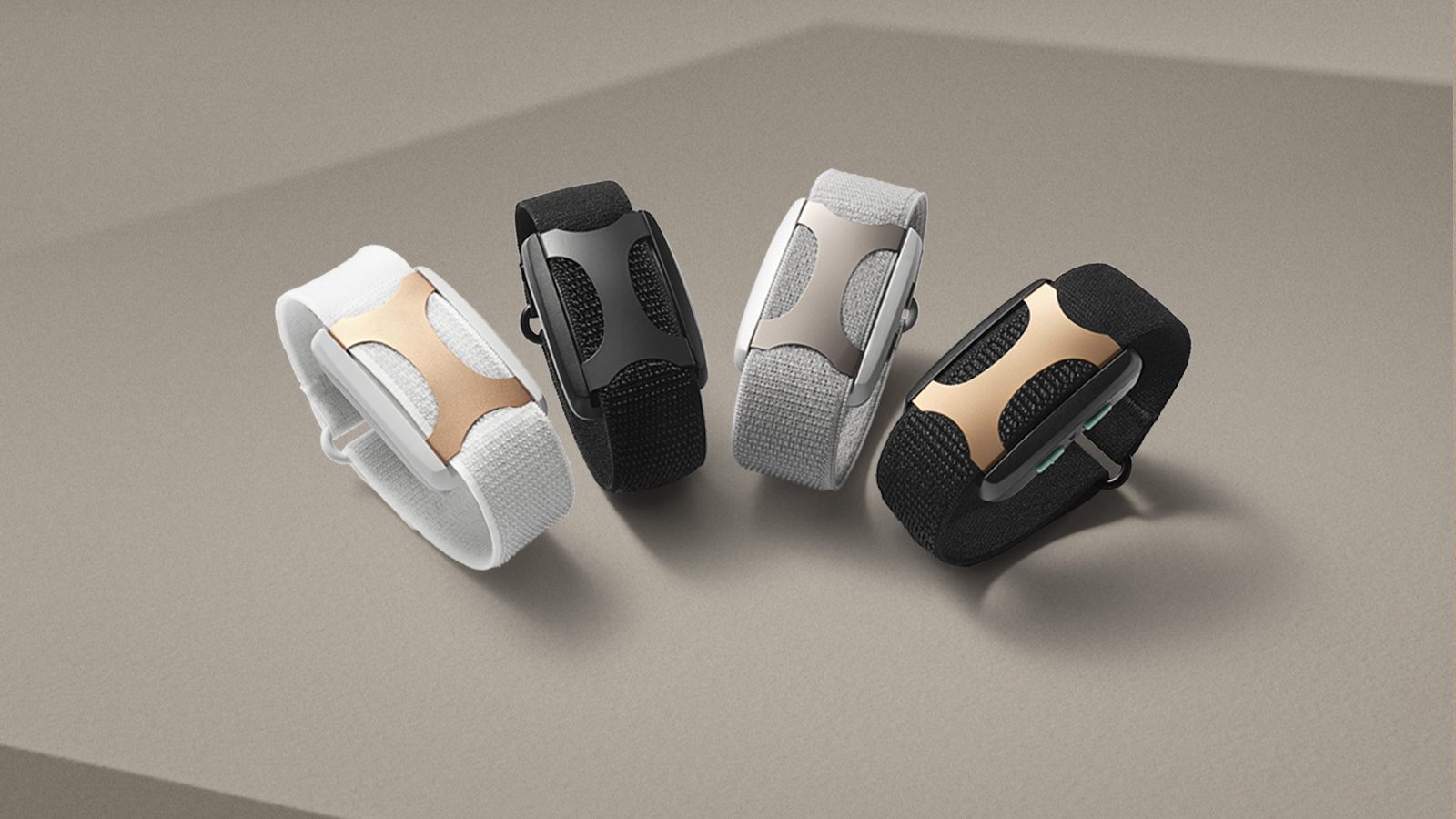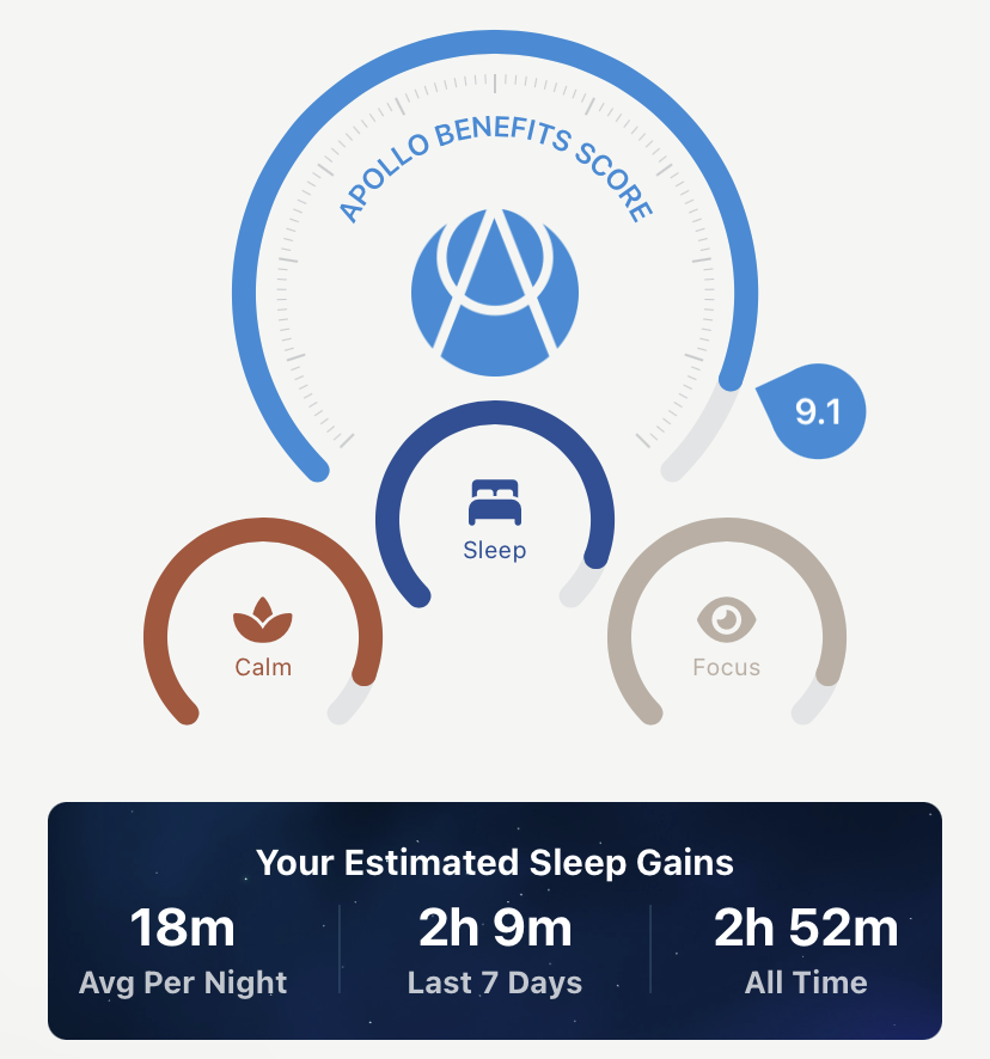Hello! Hello!
Hi, I’m Emily. Like any modern millennial (or let’s be real, literally anyone navigating life), my body houses a constant buzz of stress and anxiety.

Over the years, I’ve learned to manage fluctuating emotions that lasted anywhere from a few hours to a few weeks, but the constant burn of low-grade stress and anxiety has impacted my quality of sleep. I envy people who can sink into unconsciousness within 30 minutes and sleep through the night. It must be nice for your brain to willingly shut off when your head hits a pillow.
I’ve told a few healthcare professionals about my situation, but it takes a lot of time to achieve noticeable change. And my efforts to try things like regular exercise, guided meditations, and yoga to ease my constantly racing heart and mind were short-lived.
As physical and mental exhaustion are rooted in my body, hitting the gym to run off my stress hasn’t always worked. With yoga, my mind becomes a running monologue of Am I doing this pose right? Why does my wrist hurt? And every time I listen to guided meditations, my mind wanders into, Is there subliminal messaging brainwashing me? territory.
It’s wild that typical go-to ways to relax actually ups my stress, but nothing surprises me at this point.

A few weeks ago, I had the opportunity to write a branded article for Apollo Neuro and its latest health and wellness wearable.
Created by husband and wife team Kathryn Fantauzzi, CEO, and Dr. David Rabin, MD, PhD, Chief Medical Officer, the Apollo wearable utilizes a unique, noninvasive touch therapy experience that is designed to address how chronic stress strains the whole body by over-activating the sympathetic nervous system, releasing cortisol, altering breathing patterns, and affecting Heart Rate Variability (HRV).

The team behind the Apollo wearable crafted a device that sends low-frequency sound waves, which are felt as calming vibrations to ease the fight-or-flight response many experience when faced with deep-rooted stress. The wearable has an accompanying app with a menu of “Apollo Vibes” to choose from for different moods, like Calm, Social, Focus, Unwind, and more.
Apollo Neuro recommends 30 days of consistent use to maximize benefits and actively strengthen your nervous system.
After finishing my research on the science behind Apollo Neuro’s clinical research studies, I was inspired to take the next step to manage my stress and anxiety. Hopeful that I could find some form of relief, I figured this project was a great opportunity to try new stress management techniques as well as introduce the Apollo wearable to my routines.

With the ball rolling on this challenge, I gave myself a timeframe, set some goals, and brainstormed additional ways to manage my stress that I could incorporate into my day and night routines.
- Use the Apollo wearable for 3 hours during the day and 3 hours at night
- Listen to binaural beats to help focus and relax
- Set boundaries with work (e.g., Don’t doomscroll your inbox after hours)
- Utilize the 4-7-8 breathing method at bedtime.
Even though seven days felt short, I didn’t want to bite off more than I could chew while overhauling some of my daily routines. If everything felt good after a week, I was free to continue with these new ways to manage my stress.
With the hope that I could feel a smidge of my anxiety lessen and improve my sleep quality during the upcoming week, I strapped on my Apollo wearable and got to work.

Coming off two full days of ramped-up social activity on Friday and Saturday, I was eager to just have some “Em Time™” on Sunday, which included going to the gym, cooking a well-balanced dinner, and not speaking to anyone for at least 24 hours. In this safe bubble, I tried the Apollo wearable for the first time.

After setting up the app on my phone and figuring out how I wanted to wear it, I messed around on the app, scaling the strength back and forth as the pulsing waves danced along my arm, and tested the settings that vibed with my mood like Calm or Recover.
When bedtime rolled around, I tried the Fall Asleep setting and figured this was the best time to use the 4-7-8 breathing method. As I counted each second, I worried about how much time had passed when my brain started to trail off.
Then I reconfigured: Choosing to start over every time my thoughts strayed. Even though it took more than an hour to feel the tug of sleep, it was the first non-melatonin–induced slumber I had in weeks.
I woke up multiple times throughout the night, but since Monday was a holiday, I didn’t play my usual, anxious mental math game where I count how long until my alarm goes off. It seemed like a smidge of progress.
Despite my best efforts throughout the day, my thumb strayed to peek at my email app. But I paused because it would only unleash a rush of stress. Remembering my goals for this challenge, I hid the little notification badge.
Establishing Boundaries: Success (so far)

Four-day weeks are inherently the worst because everyone tries to materialize an extra day of work from thin air. This meant I was slammed with ASAP deliverables, overlapping timelines, and playing telephone with other teams.
With my massive to-do list written out, I swapped my usual, "Light Academia" playlist for a 10-hour binaural beats video optimized for productivity. I figured if vibrational patterns can assist my body like the Apollo wearable, vibrational sound waves might do the same.
I muted my notifications to avoid the anxiety spike whenever I heard a “knock-woosh” sound from my chat app (yes, I’m very brave). Once I was distraction-free, I was able to prioritize and focus with the binaural beats playing.
Chaos coated my Wednesday as I commuted to the busiest area of NYC for our team’s usual “in-office” day. But when I sat down, I realized I missed the note that everyone was staying home. I took a few deep breaths, turned right back around home to blast binaural beats, set my Apollo to Focus, and worked in my sweats as nature intended.
Day 5 continued with cursed energy and an endless revolving door of handing off deliverables. (I did, however, resist the urge to “casually” look at my email when I woke up, which kept my morning calm, so pat on the back for moi.)
It was hard to simply shut off from work once the clock hit 6 this week. Even as I went to the gym, made dinner, and watched reality TV, I could sense telltale trills of anxiety crawling up my gut, embedding themselves in my chest, and making it hard to sleep even with the 4-7-8 breathing method and vibrating pulses assisting me.
I’ll admit, I doomscrolled social media at 1 a.m. and wondered why I was so keyed up afterward. Even though scrolling through my apps distracted me from the lingering thoughts of the day, it was a reminder of how easy it could be to slip back into my old ways.

Day 6 brought the bliss of knowing it was a “No Meetings Friday,” so I could work in peace without resetting from one task to another. It’s amazing how much you can accomplish with three hours of uninterrupted time, binaural beats, and soothing vibrations at your wrist.
After what felt like days of treading water, I was finally able to wrap up all my tasks early. Surprisingly, the comedown from simmering stress that would leave me looking aimlessly at my phone with glazed eyes for a few hours never came. But I was mentally and physically tired (thank you, late-night doomscrolling sesh), and that mood wouldn’t vibe with the birthday party I was attending in a few hours.
The moment didn’t call for 4-7-8 breathing, so I jumped into bed and I tried out the Power Nap setting to doze off for an hour or so.
At the party, I didn't feel my usual creeping anxiety, which leads me to check my watch and wonder when I can dip out. When I got home, I was buzzing from the stimulation of the past few hours and thought I would need time to decompress, but as I sank into bed, sleep took me almost instantly.
Despite the success of the night before, as the last day of this challenge rolled around, I could feel my internal battery running low. I completely spaced on brunch plans, and a different sort of stress seeped into my mind.
Could I be as “on” as I was last night? Could I be fully present in the moment? Would my friends notice something was off?
Even the possibility of having anxiety gave me anxiety. I considered bailing on brunch, but remembering my 4-7-8 breathing, this was a good time to find my center and take a few deep breaths so I could focus, recover, and calm myself down.
Once I recognized the signs that I needed a minute, it was easier to step outside myself and understand what I needed to silence the intrusive thoughts and reassure my body there's no real threat.

After seven days of tracking, the Apollo Benefits Score calculated that I gained a few more minutes of sleep and noted my usage trends leaning toward the Unwind, Focus, and Fall Asleep settings.

With the data at my fingertips, it was a good time to look inward and check in with myself.
Overall, I was happy I had the chance to introduce stress-relieving methods into my life that I never would have considered before this unique experience.
Beyond the good vibes I was feeling (literally and figuratively), I ended this challenge optimistic about managing my anxiety and knowing there was more progress, relief, and ZZZ's on the horizon.
New techniques aside, I walked away from this week with a refreshed outlook on how I could thrive in the wake of stress and anxiety.
- Boundaries are essential: Whether it’s social or professional, you can’t find the inner peace you deserve when you’re overextended. The notification muting was something I never fully thought of until this challenge, and that, yes, I could temporarily mute the world to take care of myself. Once those boundaries are set, it’s easier to pinpoint what triggers anxiety and learn how to approach it when you're ready.
- Listen to your body: It may be hard to sift through chaotic emotions and cipher the hidden language of your needs, but if you’re tired, you’re tired and no amount of pushing through is going to help. You have to give yourself the grace to be able to step back with a few deep breaths or self-soothing activities to calm down.
- Find what works for you: I used methods that worked for me. Our bodies and minds are constantly changing, and our stress management methods should alter with them. Don’t be afraid to try something out of the box or talk to a healthcare professional about what might work best for you. Testing and learning is your best friend.

Stress and anxiety have a habit of quietly creeping into your life, but as long as you take the time to be mindful and are open to new methods, they’ll creep their way out.
Even though I just started integrating these stress relief techniques and tools into my day and night routines, I'm eager to keep going another 30 days, a few months, or even a whole year.
If it means I can give my body some relief and the TLC it deserves, I'm all in!

